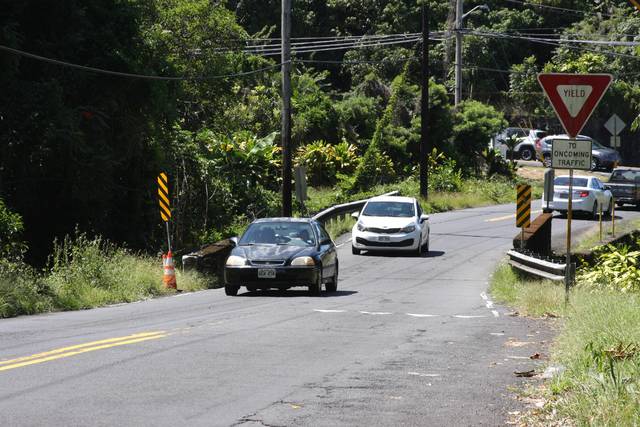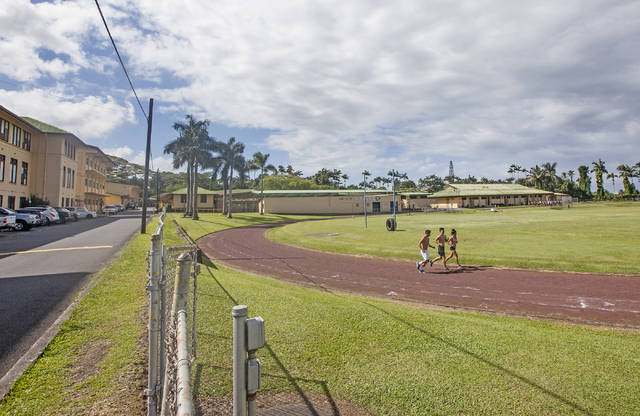Leaders in the state House and Senate agreed to a budget deal that includes funding for extending Saddle Road to Queen Kaahumanu Highway, responding to rat lungworm disease and containing rapid ohia death. ADVERTISING Leaders in the state House and
Leaders in the state House and Senate agreed to a budget deal that includes funding for extending Saddle Road to Queen Kaahumanu Highway, responding to rat lungworm disease and containing rapid ohia death.
The Legislature will vote on the two-year $28.4 billion budget before sending it to Gov. David Ige for his signature.
The Saddle Road extension appropriation includes approximately $17 million in state funds and $71.2 million in federal funds, according to lawmakers.
A draft environmental impact statement says construction would take two years, but the state Department of Transportation is not committing itself to a start date. Work on an east-side realignment is expected to be complete in August.
The budget includes $500,000 a year during the next two fiscal years for the state Department of Health to respond to rat lungworm disease. The state Department of Land and Natural Resources would get $750,000 a year for the next two years to implement the goals of the rapid ohia death response plan.
Janice Okubo, Health Department spokeswoman, said in an email that it’s not clear how the rat lungworm disease money would be used. The disease, spread to humans primarily through slugs and snails, has gained state and national attention recently.
“The Department of Health just learned of the funding yesterday and is determining how best to use the funds for our response and public information efforts,” she said. “This came as a surprise to us and we have not seen the details of the legislative intent for the funds.”
The budget likely will leave counties disappointed because it contains no provision for maintaining or expanding their share of the transient accommodation tax, according to lawmakers.
Without legislative action, the amount the counties share will drop from $103 million a year to $93 million.
East Hawaii lawmakers reached by deadline highlighted the following capital projects in the budget:
• Replacing the one-lane bridge on Kilauea Avenue near Highway 11, $13 million.
• Upgrading the Hilo High School track and field, $1.25 million.
• Adding air conditioning to the new University of Hawaii at Hilo dorm, $3 million.
• New accelerating and decelerating lanes for Highway 11 at Panaewa, $2 million.
• Renovating the Hilo High School auditorium, $2.4 million.
• New cafeteria for Waiakeawaena Elementary School, $2.5 million.
East Hawaii lawmakers said the one-lane bridge on Kilauea Avenue will be replaced with a two-lane span. The bridge is a bottleneck for traffic entering and exiting Highway 11.
“The bridge, especially during the mornings and afternoons, is very heavily used,” said Rep. Richard Onishi, D-Hilo, Kurtistown, Volcano. “There have been some minor accidents that have occurred there and a lot of near misses.”
Sen. Lorraine Inouye said $2 million would be allocated for the Hilo Medical Center primary care residency program.
The proposed budget also would maintain funding for the Pacific International Space Center for Exploration Systems, and fund feasibility studies for a small satellite launch facility in East Hawaii and basalt fiber manufacturing plant.
Rep. Mark Nakashima, D-Hamakua, said there is interest in using East Hawaii as a launch site for small satellites because it’s relatively close to the equator. Other possible locations are Florida and California.
He said the rockets would be 60 feet tall.
“What we’re looking at is rockets that go up with all these small payloads,” Nakashima said.
He said the small satellites could be used to create global internet networks.
Email Tom Callis at tcallis@hawaiitribune-herald.com.




